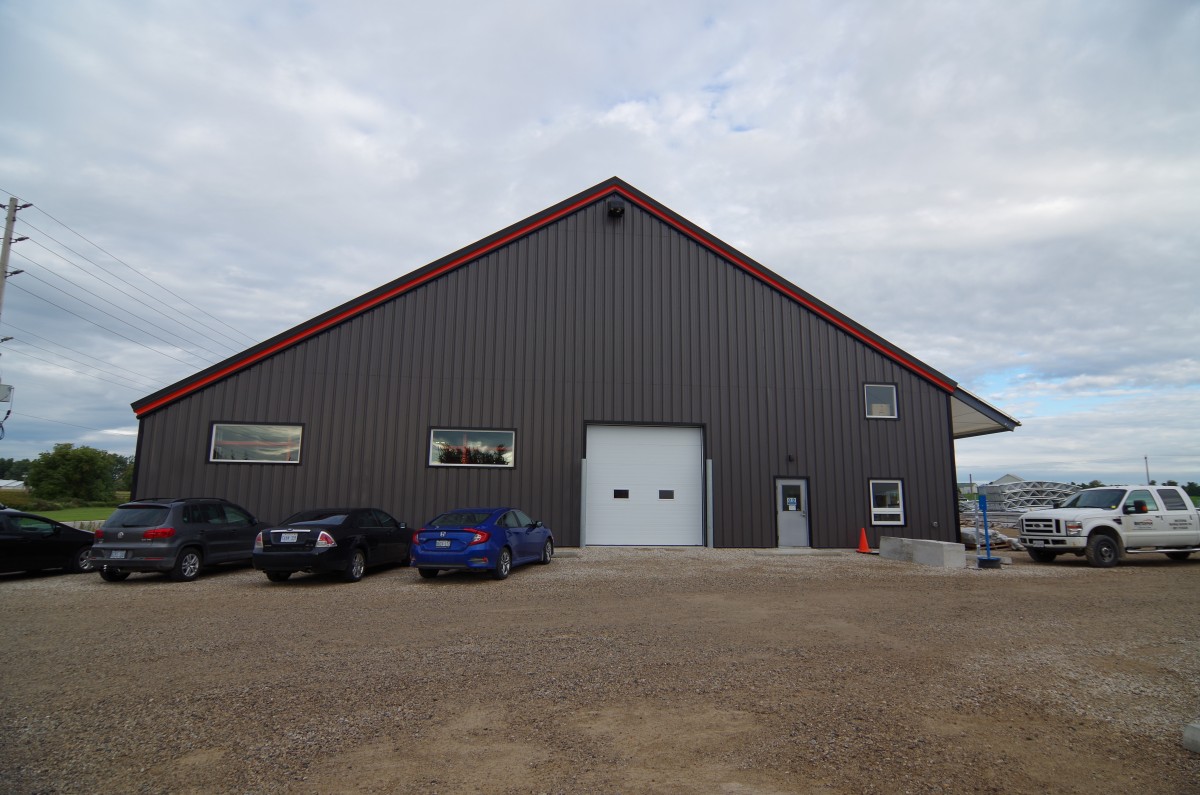By: Robert Lee
Galvalume Steel
Galvalume only partly consists of steel. In fact, Galvalume consists of steel coil coated with an alloy of 55% aluminum and 45% zinc. It has a smoother appearance than galvanized steel. A variation on Galvalume is Galvalume Plus, which is Galvalume with a thin acrylic coating.
The advantages of Galvalume are that it resists corrosion and heat similar to aluminum. In static situations, Galvalume is more corrosion-resistant than galvanized steel, but where the material is exposed to scratches or abrasions (bumps, hits, etc), galvanized steel has the advantage.
Galvanized Steel
Galvanized steel and Galvalume weigh about the same. Costs too, are similar. Each contains about the same amount of recycled materials (35%). However, there is considerable variation in Galvalume coatings. PVDF is the best coating, similar to Teflon. It has good stain and chemical resistance and is softer than polyester. PVDF increases the lifespan of Galvalume significantly.
Galvanized steel involves coating steel with a layer of zinc. Hot-dip galvanizing involves immersing the metal in liquid zinc at high temperatures (450C). The zinc reacts with oxygen to form zinc oxide, then with carbon dioxide to form zinc carbonate. This gives a galvanized product of its dull grey appearance and protects it from corrosion.
Galvanized steel is the less costly cousin of stainless steel, and has a beaded appearance as opposed to a smooth, shiny one. It can be welded much more easily than stainless steel. However, galvanized steel can only be used in applications where the temperature will be less than 200C. You will not see, for instance, any galvanized cooking pans, but an abundance of stainless steel ones. Galvalume, with its aluminum content, can be used in higher-heat situations. Automobiles often are fabricated with electro-galvanized steel, thinner material, and less durable than either galvalume or galvanized steel.
Galvanization Advantages
One of the advantages of galvanization, specifically hot-dip galvanizing, is in the ability to protect after cuts, drill holes, welds and joints have been made. Drilling or cutting breaks through the galvanization to naked steel, but hot-dip galvanizing, which involves a galvanizing treatment made after fabrication which seals those fissures and breaks. Where one sees rust weeping through channels, holes, or design cuts in galvanized metal, it is due primarily to two causes: the material was not hot-dipped, or the material was cut after processing, thus exposing the raw metal beneath. Galvalume offers no such protection. However, since the product contains less steel, it may take longer than damaged galvanized metal to begin rusting.
All of Cobra Structures’ building feature hot-dipped galvanized building components from Britespan Building Systems.
Powder Coating
Powder coating is the application of a polymer to the material (most often metal) by an electrostatic spray followed by a heat treatment to generate long-chain molecules. This coating developed in the 1960s, providing both aesthetic and practical benefits.
Powder coating allows for thick coating, whether vertical or horizontal. With no fluids, there is no running or thinning. It produces fewer emissions than liquid sprays, and several coats can be applied in a variety of resin colours. In fact, thicker coats are more desirable than thin coatings. There is little waste in the powder coating process since any excess spray can be recovered and reused. Unfortunately, because powder coating is so simple and so popular, inferior quality workmanship often results.
Black Steel
Black steel pipe is steel that is not galvanized with a protective coat of zinc. Its dark color results from the iron oxide that covers it, and it is sometimes referred to as black iron piping. Black steel must be cleaned properly to be welded well.
In gas transport, black pipe is very durable, but it corrodes easily. It is used for low-pressure, low-heat water pipes that otherwise quickly corrode. Black iron pipe is coarse to the touch, scratches easily, and flakes. Black iron pipe tends to leak at the connector spots and is time-intensive to repair. Black iron pipe is less expensive than steel, but it is not as energy efficient. However, it is more readily available, which makes its use convenient.




